Health Monitoring of Abies nebrodensis Combining UAV Remote Sensing Data, Climatological and Weather Observations, and Phytosanitary Inspections
Abstract
1. Introduction
2. Materials and Methods
2.1. Methodological Approach
2.2. Study Area
2.3. Climatological and Meteorological Data
2.3.1. ERA5-Land Climatological Dataset
2.3.2. Observed Weather Dataset
2.4. Surveyed Area and Data Acquisition
2.5. Image Processing and Extraction of Vegetation Indices (VIs)
2.6. Spectral Analysis
2.7. Software and Coding
3. Results
3.1. Climatological Analysis
3.1.1. Long-Term Analysis
3.1.2. Observed Meteorological Data Analysis
3.2. Spectral Analysis Outcomes
3.3. Analysis of VIs
4. Discussion
5. Conclusions
Supplementary Materials
Author Contributions
Funding
Data Availability Statement
Acknowledgments
Conflicts of Interest
References
- Zhu, Y.; Xu, X.; Xi, Z.; Liu, J. Conservation Priorities for Endangered Trees Facing Multiple Threats around the World. Conserv. Biol. 2023, 37, e14142. [Google Scholar] [CrossRef] [PubMed]
- Kerry, R.G.; Montalbo, F.J.P.; Das, R.; Patra, S.; Mahapatra, G.P.; Maurya, G.K.; Nayak, V.; Jena, A.B.; Ukhurebor, K.E.; Jena, R.C.; et al. An Overview of Remote Monitoring Methods in Biodiversity Conservation. Environ. Sci. Pollut. Res. 2022, 29, 80179–80221. [Google Scholar] [CrossRef] [PubMed]
- Thomas, P. Abies Nebrodensis. The IUCN Red List of Threatened Species. Available online: https://www.iucnredlist.org/species/30478/91164876 (accessed on 12 November 2024).
- Pasta, S.; Sala, G.; La Mantia, T.; Bondì, C.; Tinner, W. The Past Distribution of Abies Nebrodensis (Lojac.) Mattei: Results of a Multidisciplinary Study. Veg. Hist. Archaeobotany 2020, 29, 357–371. [Google Scholar] [CrossRef]
- Venturella, G.; Mazzola, P.; Raimondo, F.M. Strategies for the Conservation and Restoration of the Relict Population of Abies nebrodensis (Lojac.) Mattei. Bocconea 1997, 7, 417–425. [Google Scholar]
- Frascella, A.; Sarrocco, S.; Mello, A.; Venice, F.; Salvatici, C.; Danti, R.; Emiliani, G.; Barberini, S.; Rocca, G.D. Biocontrol of Phytophthora xcambivora on Castanea sativa: Selection of Local Trichoderma spp. Isolates for the Management of Ink Disease. Forests 2022, 13, 1065. [Google Scholar] [CrossRef]
- del Valle, J.C.; Arista, M.; Benítez-Benítez, C.; Ortiz, P.L.; Jiménez-López, F.J.; Terrab, A.; Balao, F. Genomic-Guided Conservation Actions to Restore the Most Endangered Conifer in the Mediterranean Basin. Mol. Ecol. 2024, e17605. [Google Scholar] [CrossRef] [PubMed]
- Garza, G.; Rivera, A.; Venegas Barrera, C.S.; Martinez-Ávalos, J.G.; Dale, J.; Feria Arroyo, T.P. Potential Effects of Climate Change on the Geographic Distribution of the Endangered Plant Species Manihot Walkerae. Forests 2020, 11, 689. [Google Scholar] [CrossRef]
- Frascella, A.; Barberini, S.; Della Rocca, G.; Emiliani, G.; Di Lonardo, V.; Secci, S.; Danti, R. Insights on the Fungal Communities Associated with Needle Reddening of the Endangered Abies Nebrodensis. J. Plant Pathol. 2024, 106, 1051–1065. [Google Scholar] [CrossRef]
- López-Tirado, J.; Moreno-García, M.; Romera-Romera, D.; Zarco, V.; Hidalgo, P.J. Forecasting the Circum-Mediterranean Firs (Abies spp., Pinaceae) Distribution: An Assessment of a Threatened Conifers’ Group Facing Climate Change in the Twenty-First Century. New For. 2024, 55, 143–156. [Google Scholar] [CrossRef]
- Spano, D.; Mereu, V.; Bacciu, V.; Marras, S.; Trabucco, A.; Adinolfi, M.; Barbato, G.; Bosello, F.; Breil, M.; Buonocore, M.; et al. Analisi del Rischio. I Cambiamenti Climatici in Italia; Fondazione CMCC—Centro Euro-Mediterraneo sui Cambiamenti Climatici: Lecce, Italy, 2020. [Google Scholar]
- Settanta, G.; Fraschetti, P.; Lena, F.; Perconti, W.; Piervitali, E. Recent Tendencies of Extreme Heat Events in Italy. Theor. Appl. Climatol. 2024, 155, 7335–7348. [Google Scholar] [CrossRef]
- Ballester, J.; Quijal-Zamorano, M.; Méndez Turrubiates, R.F.; Pegenaute, F.; Herrmann, F.R.; Robine, J.M.; Basagaña, X.; Tonne, C.; Antó, J.M.; Achebak, H. Heat-Related Mortality in Europe during the Summer of 2022. Nat. Med. 2023, 29, 1857–1866. [Google Scholar] [CrossRef] [PubMed]
- ESWD. European Severe Weather Database. Available online: https://eswd.eu/cgi-bin/eswd.cgi (accessed on 3 January 2025).
- Marzen, M.; Iserloh, T.; De Lima, J.L.M.P.; Fister, W.; Ries, J.B. Impact of Severe Rain Storms on Soil Erosion: Experimental Evaluation of Wind-Driven Rain and Its Implications for Natural Hazard Management. Sci. Total Environ. 2017, 590–591, 502–513. [Google Scholar] [CrossRef] [PubMed]
- Hartmann, H.; Bastos, A.; Das, A.J.; Esquivel-Muelbert, A.; Hammond, W.M.; Martínez-Vilalta, J.; McDowell, N.G.; Powers, J.S.; Pugh, T.A.M.; Ruthrof, K.X.; et al. Climate Change Risks to Global Forest Health: Emergence of Unexpected Events of Elevated Tree Mortality Worldwide. Annu. Rev. Plant Biol. 2022, 73, 673–702. [Google Scholar] [CrossRef] [PubMed]
- Duarte, A.; Borralho, N.; Cabral, P.; Caetano, M. Recent Advances in Forest Insect Pests and Diseases Monitoring Using UAV-Based Data: A Systematic Review. Forests 2022, 13, 911. [Google Scholar] [CrossRef]
- Gorodetskaya, L.A.; Denisova, A.Y.; Kavelenova, L.M.; Pomogaybin, A.V.; Ruzaeva, I.V.; Fedoseev, V.A. Monitoring of reintroduced rare plants using uav data. Int. Arch. Photogramm. Remote Sens. Spat. Inf. Sci. 2023, XLVIII-1/W2-2023, 1895–1900. [Google Scholar] [CrossRef]
- Marques, P.; Pádua, L.; Adão, T.; Hruška, J.; Peres, E.; Sousa, A.; Sousa, J.J. UAV-Based Automatic Detection and Monitoring of Chestnut Trees. Remote Sens. 2019, 11, 855. [Google Scholar] [CrossRef]
- Nisio, A.D.; Adamo, F.; Acciani, G.; Attivissimo, F. Fast Detection of Olive Trees Affected by Xylella Fastidiosa from Uavs Using Multispectral Imaging. Sensors 2020, 20, 4915. [Google Scholar] [CrossRef] [PubMed]
- Hersbach, H.; Bell, B.; Berrisford, P.; Hirahara, S.; Horányi, A.; Muñoz-Sabater, J.; Nicolas, J.; Peubey, C.; Radu, R.; Schepers, D.; et al. The ERA5 Global Reanalysis. Q. J. R. Meteorol. Soc. 2020, 146, 1999–2049. [Google Scholar] [CrossRef]
- Vicente-Serrano, S.M.; Beguería, S.; Gimeno, L.; Eklundh, L.; Giuliani, G.; Weston, D.; El Kenawy, A.; López-Moreno, J.I.; Nieto, R.; Ayenew, T.; et al. Challenges for Drought Mitigation in Africa: The Potential Use of Geospatial Data and Drought Information Systems. Appl. Geogr. 2012, 34, 471–486. [Google Scholar] [CrossRef]
- Regione Siciliana SIAS—Servizio Informativo Agrometeorologico Siciliano. Available online: http://www.sias.regione.sicilia.it/ (accessed on 10 February 2025).
- Iglhaut, J.; Cabo, C.; Puliti, S.; Piermattei, L.; O’Connor, J.; Rosette, J. Structure from Motion Photogrammetry in Forestry: A Review. Curr. For. Rep. 2019, 5, 155–168. [Google Scholar] [CrossRef]
- Gillies, S. Geospatial Raster I/O for Python Programmers 2013. Available online: https://rasterio.readthedocs.io/en/stable/ (accessed on 10 February 2025).
- Harris, C.R.; Millman, K.J.; van der Walt, S.J.; Gommers, R.; Virtanen, P.; Cournapeau, D.; Wieser, E.; Taylor, J.; Berg, S.; Smith, N.J.; et al. Array Programming with NumPy. Nature 2020, 585, 357–362. [Google Scholar] [CrossRef] [PubMed]
- The Pandas development Pandas-Dev/Pandas: Pandas. Available online: https://pandas.pydata.org/ (accessed on 1 December 2024).
- McKinney, W. Data Structures for Statistical Computing in Python. In Proceedings of the 9th Python in Science Conference, Austin, TX, USA, 28 June 2010; Volume 445, pp. 51–56. [Google Scholar]
- Arcidiaco, L.; Danti, R.; Corongiu, M.; Emiliani, G.; Frascella, A.; Mello, A.; Bonora, L.; Barberini, S.; Pellegrini, D.; Sabatini, N.; et al. Preliminary Machine Learning-Based Classification of Ink Disease in Chestnut Orchards Using High-Resolution Multispectral Imagery from Unmanned Aerial Vehicles: A Comparison of Vegetation Indices and Classifiers. Forests 2025, 16, 754. [Google Scholar] [CrossRef]
- Rouse, J.W.; Haas, R.H.; Schell, J.A.; Deering, D.W. Monitoring Vegetation Systems in the Great Plains with ERTS; NASA Special Publications: Washington, DC, USA, 1974; Volume 351, p. 309.
- Gitelson, A.A.; Kaufman, Y.J.; Merzlyak, M.N. Use of a Green Channel in Remote Sensing of Global Vegetation from EOS-MODIS. Remote Sens. Environ. 1996, 58, 289–298. [Google Scholar] [CrossRef]
- Woebbecke, D.; Meyer, G.; Von Bargen, K.; Mortensen, D. Shape Features for Identifying Young Weeds Using Image Analysis. Trans. ASAE 1995, 38, 271–281. [Google Scholar] [CrossRef]
- Kruse, F.A.; Lefkoff, A.B.; Boardman, J.W.; Heidebrecht, K.B.; Shapiro, A.T.; Barloon, P.J.; Goetz, A.F.H. The Spectral Image Processing System (SIPS)—Interactive Visualization and Analysis of Imaging Spectrometer Data. Remote Sens. Environ. 1993, 44, 145–163. [Google Scholar] [CrossRef]
- Kailath, T. The Divergence and Bhattacharyya Distance Measures in Signal Selection. IEEE Trans. Commun. 1967, 15, 52–60. [Google Scholar] [CrossRef]
- Moreno, J.M.; Constantinou, N.C. Josuemtzmo/xarrayMannKendall: Mann Kendall Significance Test Implemented in Xarray. 2021. Available online: https://docs.xarray.dev/en/stable/ (accessed on 1 October 2024).
- Hoyer, S.; Fitzgerald, C.; Hamman, J.; Akleeman; Kluyver, T.; Roos, M.; Helmus, J.J.; Markel; Cable, P.; Maussion, F.; et al. Xarray, V0.8.0. 2016. Available online: https://github.com/josuemtzmo/xarrayMannKendall (accessed on 1 December 2024).
- Hoyer, S.; Hamman, J. Xarray: N-D Labeled Arrays and Datasets in Python. J. Open Res. Softw. 2017, 5, 10. [Google Scholar] [CrossRef]
- Jordahl, K. GeoPandas: Python Tools for Geographic Data. 2014. Available online: https://geopandas.org/en/stable/ (accessed on 1 December 2024).
- Pedregosa, F.; Varoquaux, G.; Gramfort, A.; Michel, V.; Thirion, B.; Grisel, O.; Blondel, M.; Prettenhofer, P.; Weiss, R.; Dubourg, V.; et al. Scikit-Learn: Machine Learning in Python. J. Mach. Learn. Res. 2011, 12, 2825–2830. [Google Scholar]
- Virtanen, P.; Gommers, R.; Oliphant, T.E.; Haberland, M.; Reddy, T.; Cournapeau, D.; Burovski, E.; Peterson, P.; Weckesser, W.; Bright, J.; et al. SciPy 1.0: Fundamental Algorithms for Scientific Computing in Python. Nat. Methods 2020, 17, 261–272. [Google Scholar] [CrossRef] [PubMed]
- Hunter, J.D. Matplotlib: A 2D Graphics Environment. Comput. Sci. Eng. 2007, 9, 90–95. [Google Scholar] [CrossRef]
- Waskom, M. Seaborn: Statistical Data Visualization. J. Open Source Softw. 2021, 6, 3021. [Google Scholar] [CrossRef]
- Adams, J. Climate_indices, an Open Source Python Library Providing Reference Implementations of Commonly Used Climate Indices. Clim. Indices Python. 2017. [Google Scholar]
- Walter, H.; Lieth, H.; Rehder, H.; Harnickell, E. Klimadiagramm-Weltatlas; G. Fischer: Jena, Germany, 1960. [Google Scholar]
- Frascella, A.; Della Rocca, G.; Barberini, S.; Emiliani, G.; Secci, S.; Lambardi, M.; Benelli, C.; Tarraf, W.; Izgu, T.; Schicchi, R.; et al. Innovative In Situ and Ex Situ Conservation Strategies of the Madonie Fir Abies Nebrodensis. Sustainability 2022, 14, 12643. [Google Scholar] [CrossRef]
- Benelli, C.; Tarraf, W.; İzgü, T.; Anichini, M.; Faraloni, C.; Salvatici, M.C.; Jouini, N.; Germanà, M.A.; Danti, R.; Lambardi, M. Long-Term Conservation for the Safeguard of Abies Nebrodensis: An Endemic and Endangered Species of Sicily. Plants 2024, 13, 1682. [Google Scholar] [CrossRef] [PubMed]
- Chen, G.; Meentemeyer, R.K. Remote Sensing of Forest Damage by Diseases and Insects. In Remote Sensing for Sustainability; CRC Press: Boca Raton, FL, USA, 2016. [Google Scholar]
- Cotrozzi, L. Spectroscopic Detection of Forest Diseases: A Review (1970–2020). J. For. Res. 2022, 33, 21–38. [Google Scholar] [CrossRef]
- Ismail, R.; Mutanga, O.; Bob, U. Forest Health and Vitality: The Detection and Monitoring of Pinus Patula Trees Infected by Sirex Noctilio Using Digital Multispectral Imagery. South. Hemisph. For. J. 2007, 69, 39–47. [Google Scholar] [CrossRef]
- Vacek, Z.; Vacek, S.; Cukor, J. European Forests under Global Climate Change: Review of Tree Growth Processes, Crises and Management Strategies. J. Environ. Manag. 2023, 332, 117353. [Google Scholar] [CrossRef] [PubMed]
- Xu, P.; Chen, B.; Zhang, J.; Xue, L.; Zhu, L. A Region-Based Block Compressive Sensing Algorithm for Plant Hyperspectral Images. Comput. Electron. Agric. 2019, 162, 699–708. [Google Scholar] [CrossRef]
- Bayındır, C.; Namlı, B. Efficient Sensing of von Kármán Vortices Using Compressive Sensing. Comput. Fluids 2021, 226, 104975. [Google Scholar] [CrossRef]
- Jiang, W.; Zhan, Y.; Xi, S.; Huang, D.D.; Lu, J. Compressive Sensing-Based 3-D Rain Field Tomographic Reconstruction Using Simulated Satellite Signals. IEEE Trans. Geosci. Remote Sens. 2022, 60, 4101013. [Google Scholar] [CrossRef]
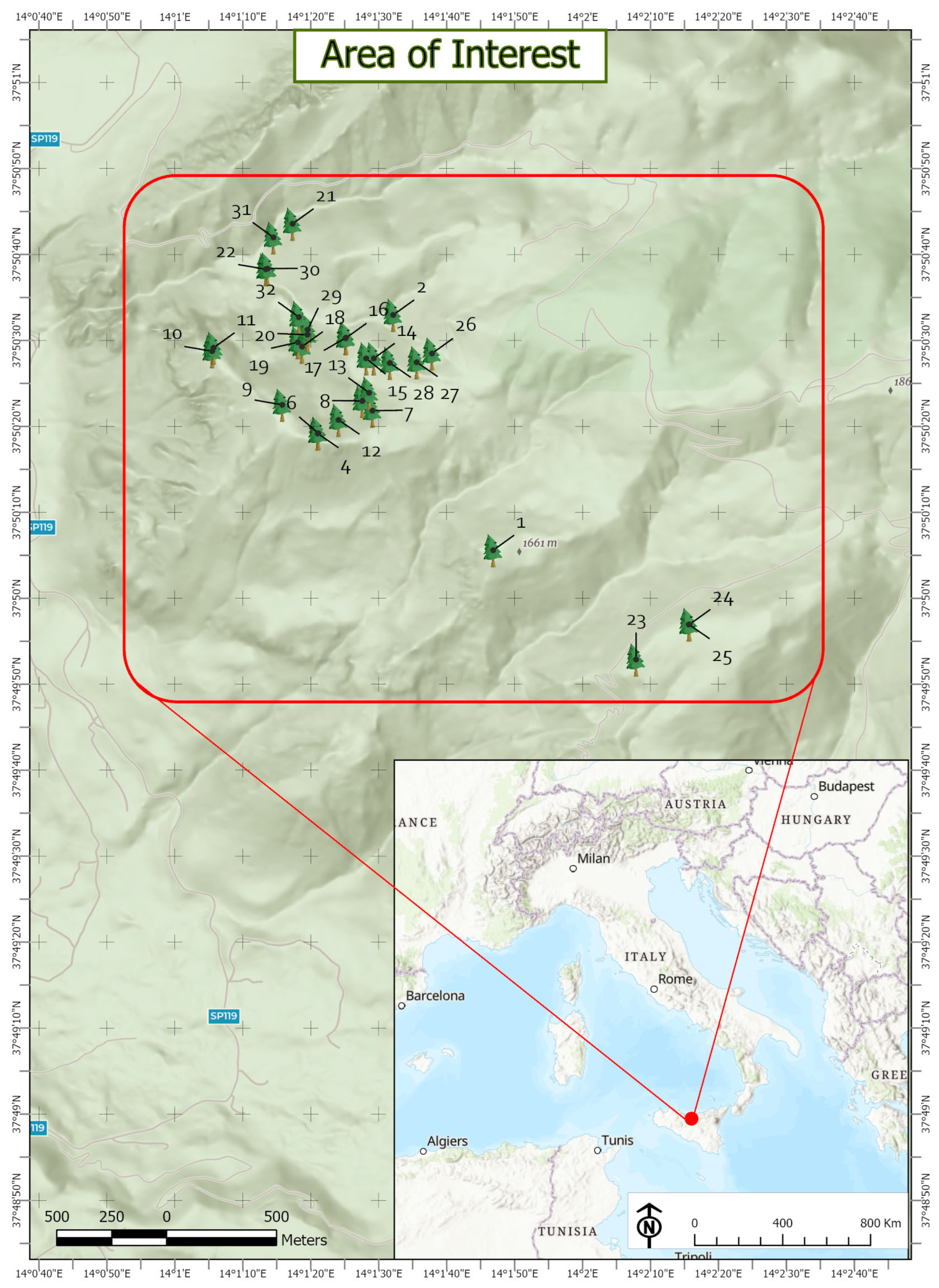
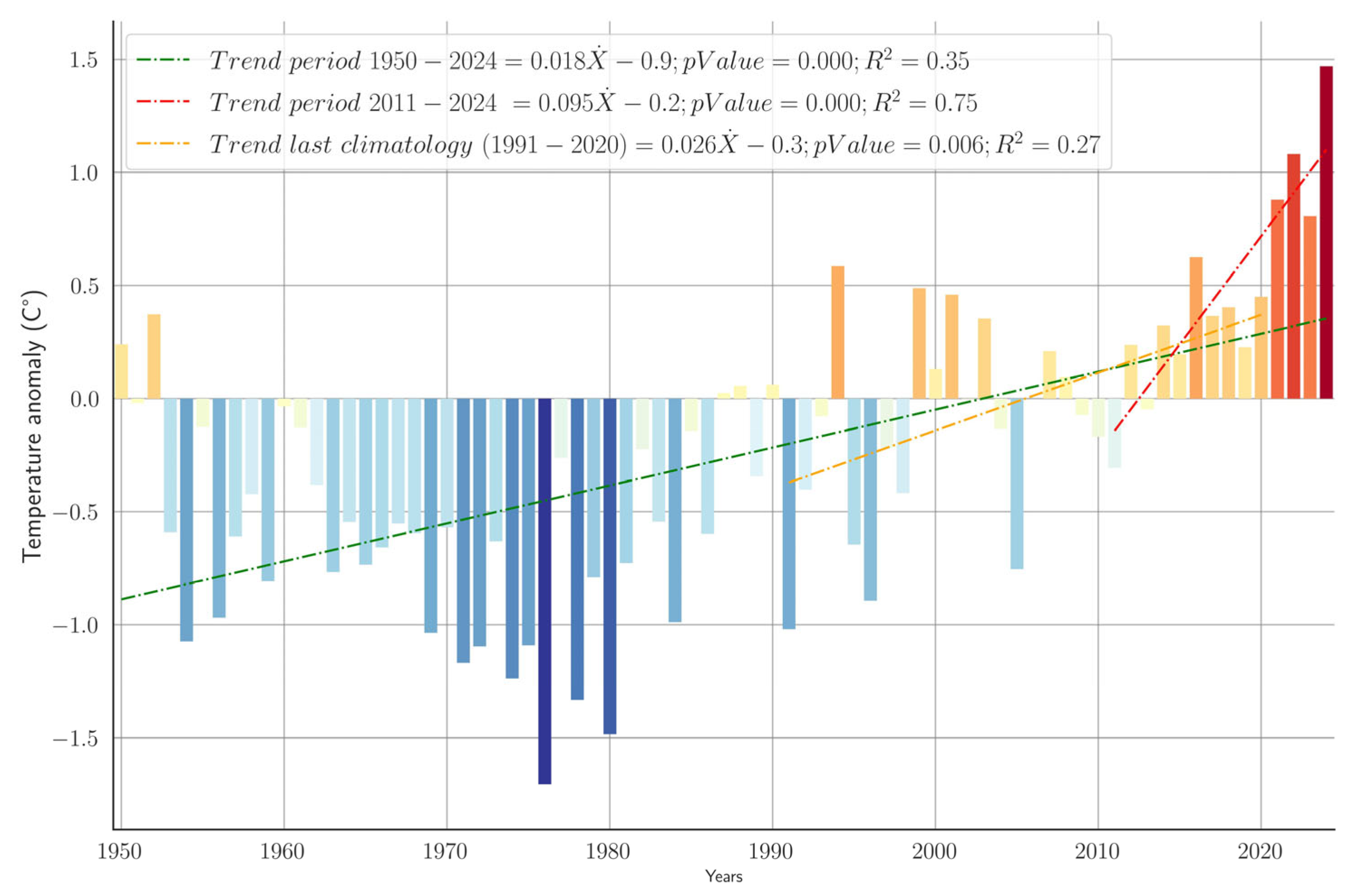
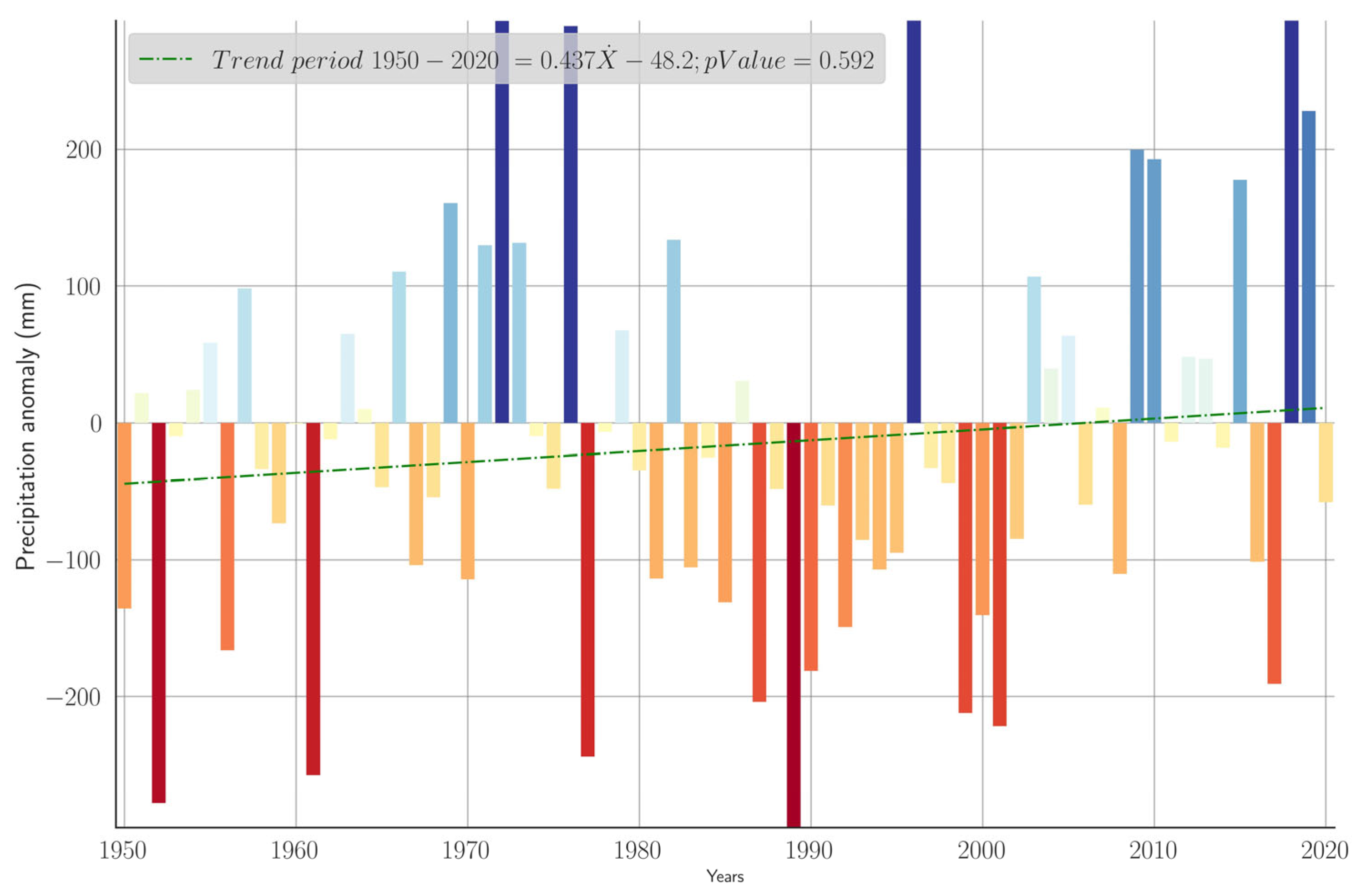
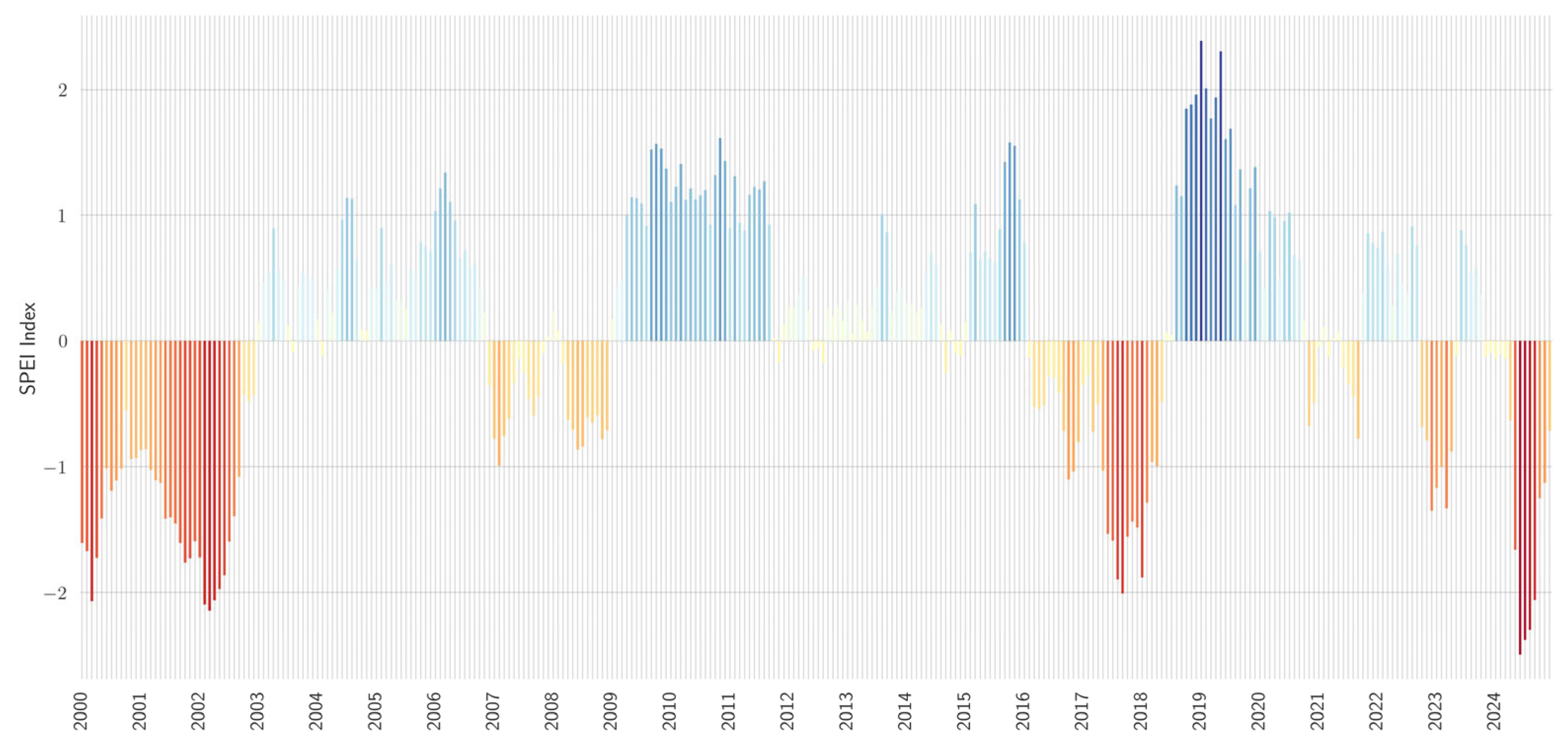
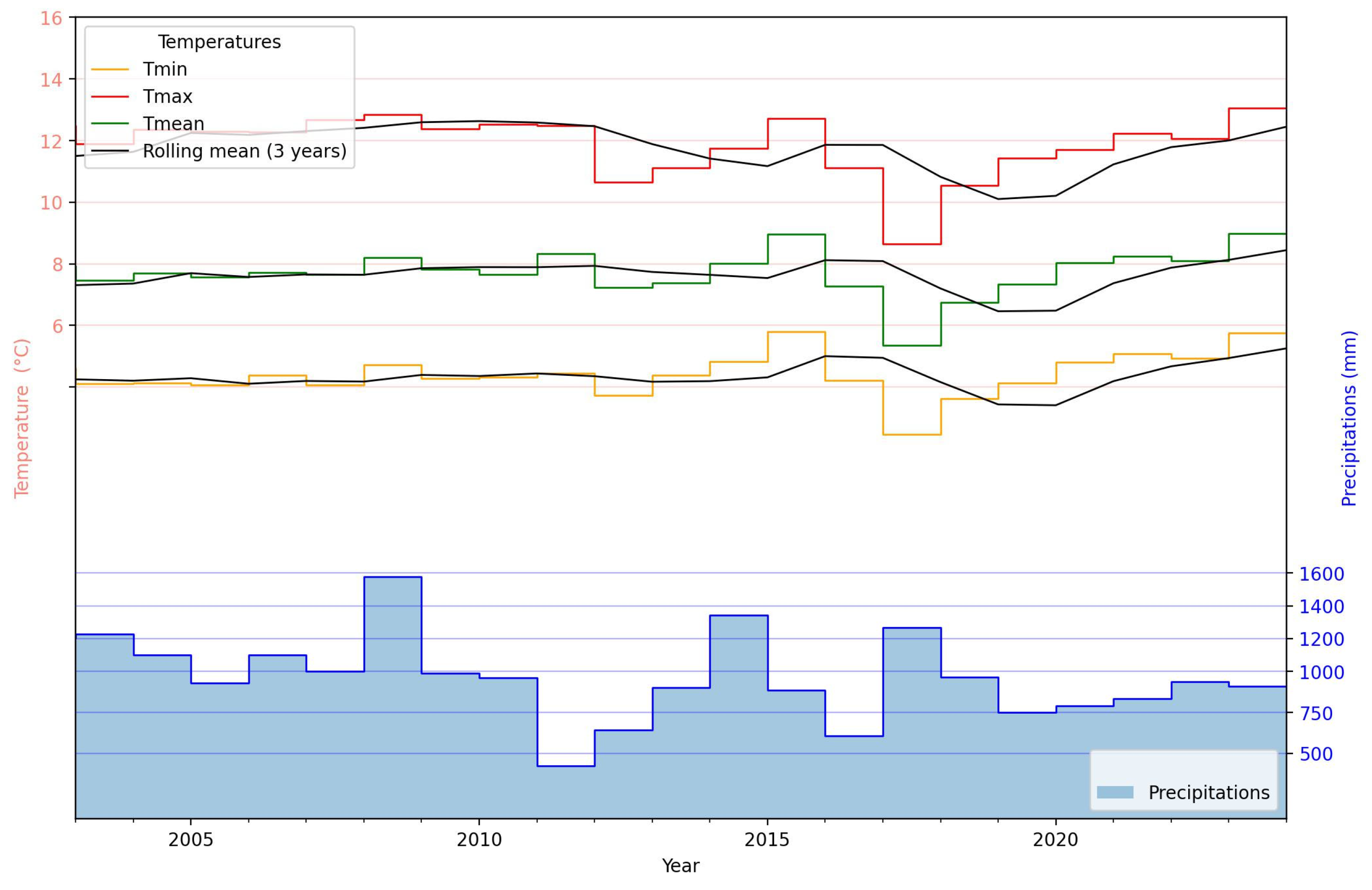
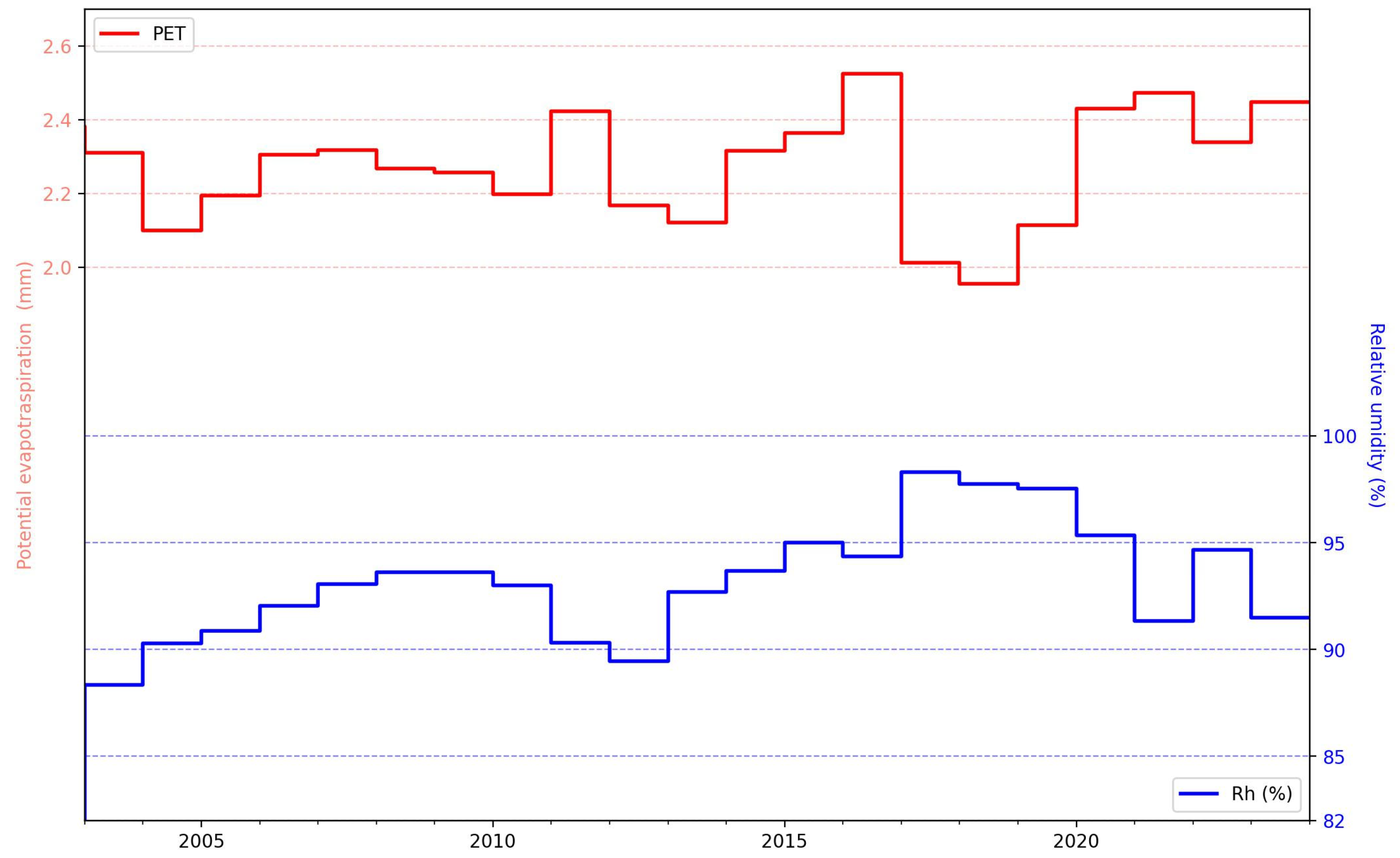
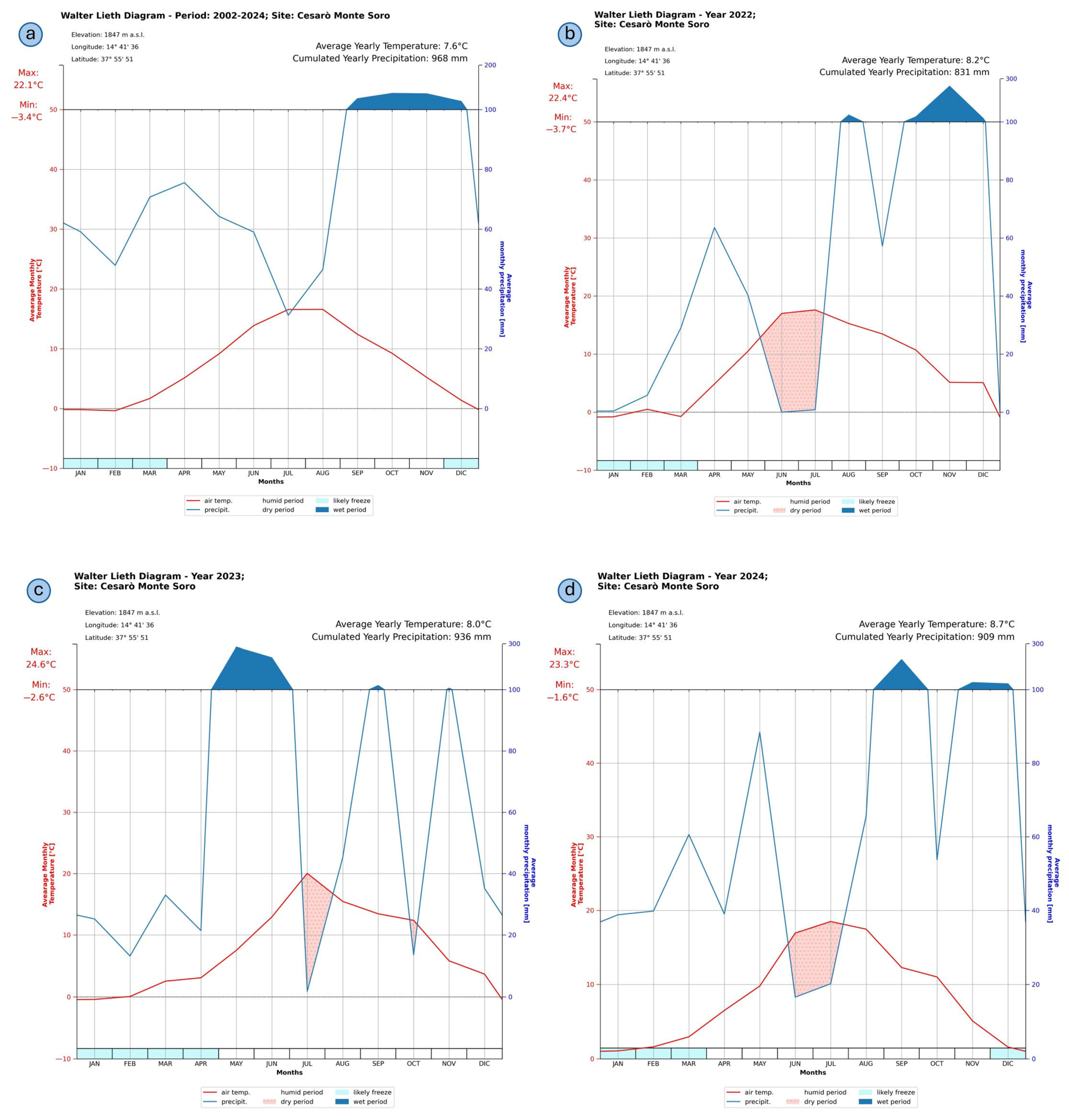






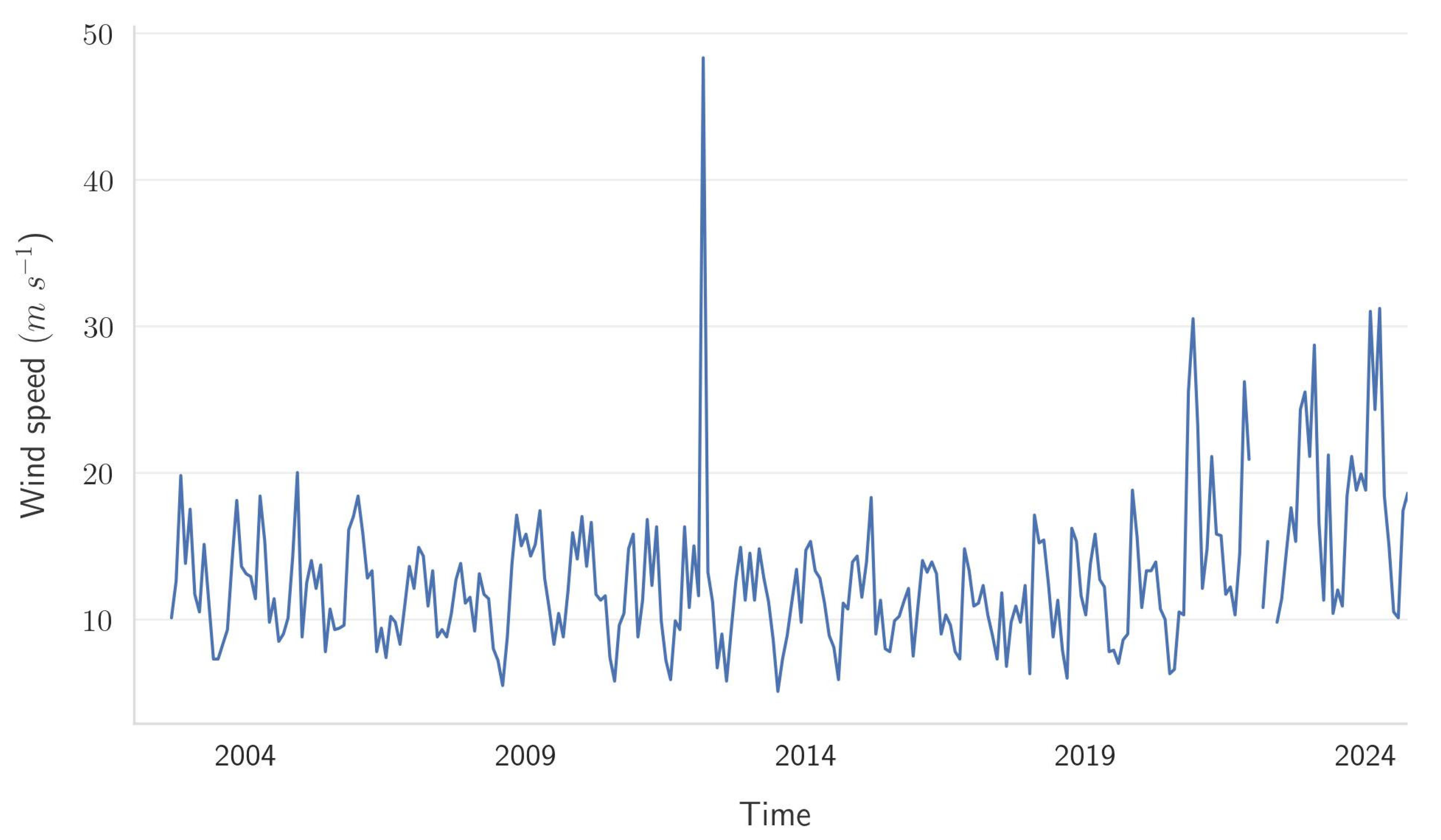
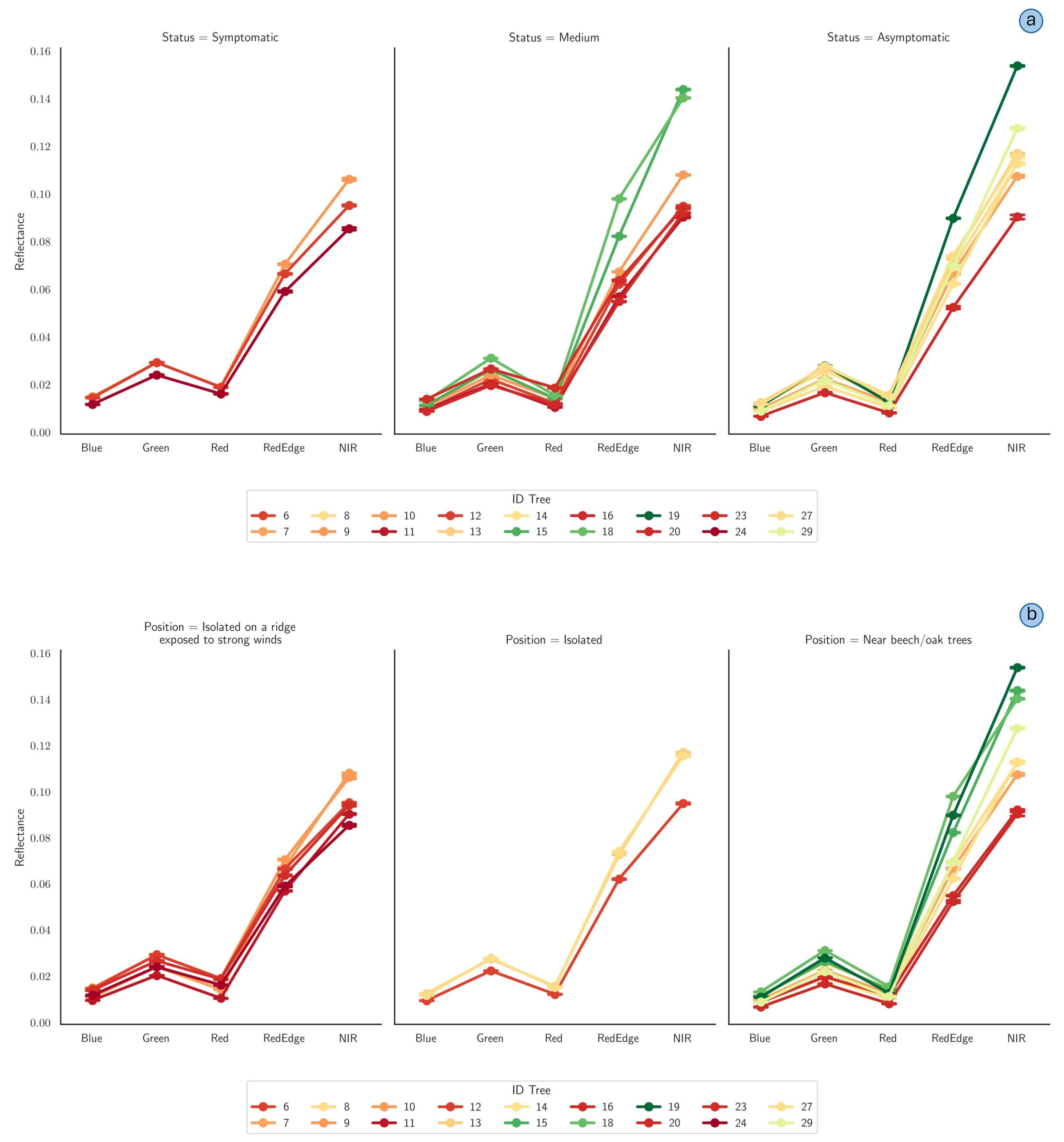
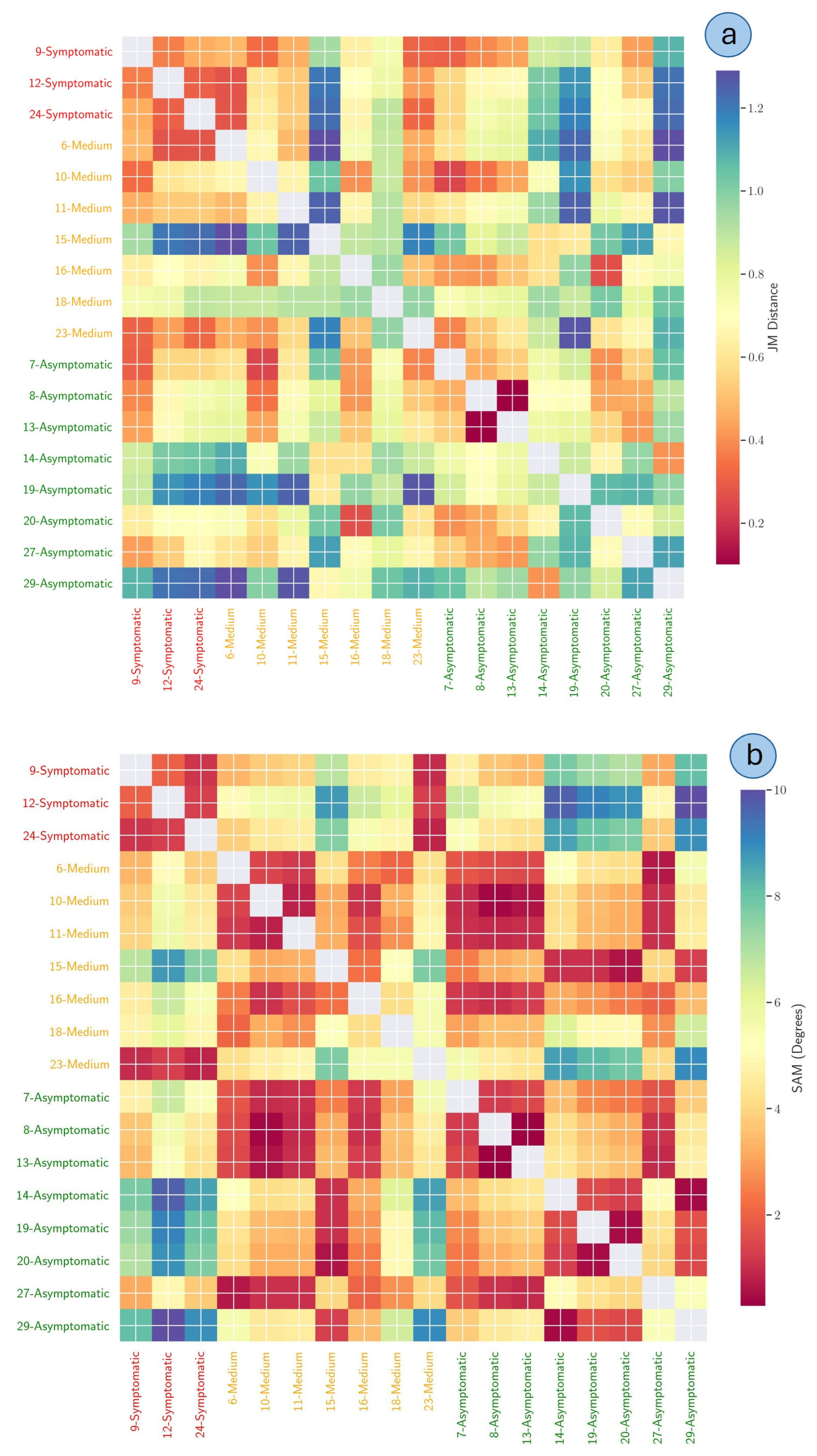
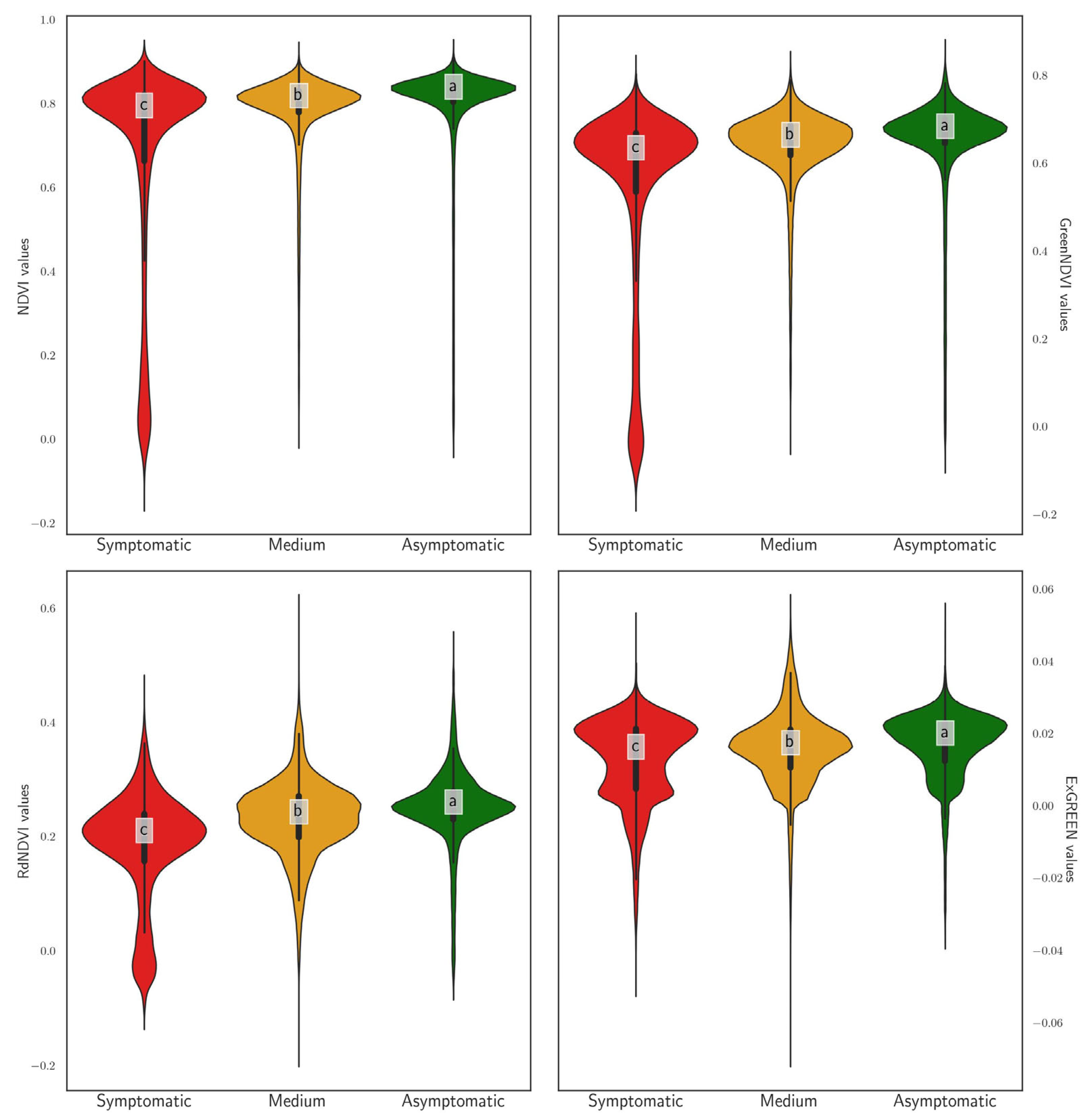
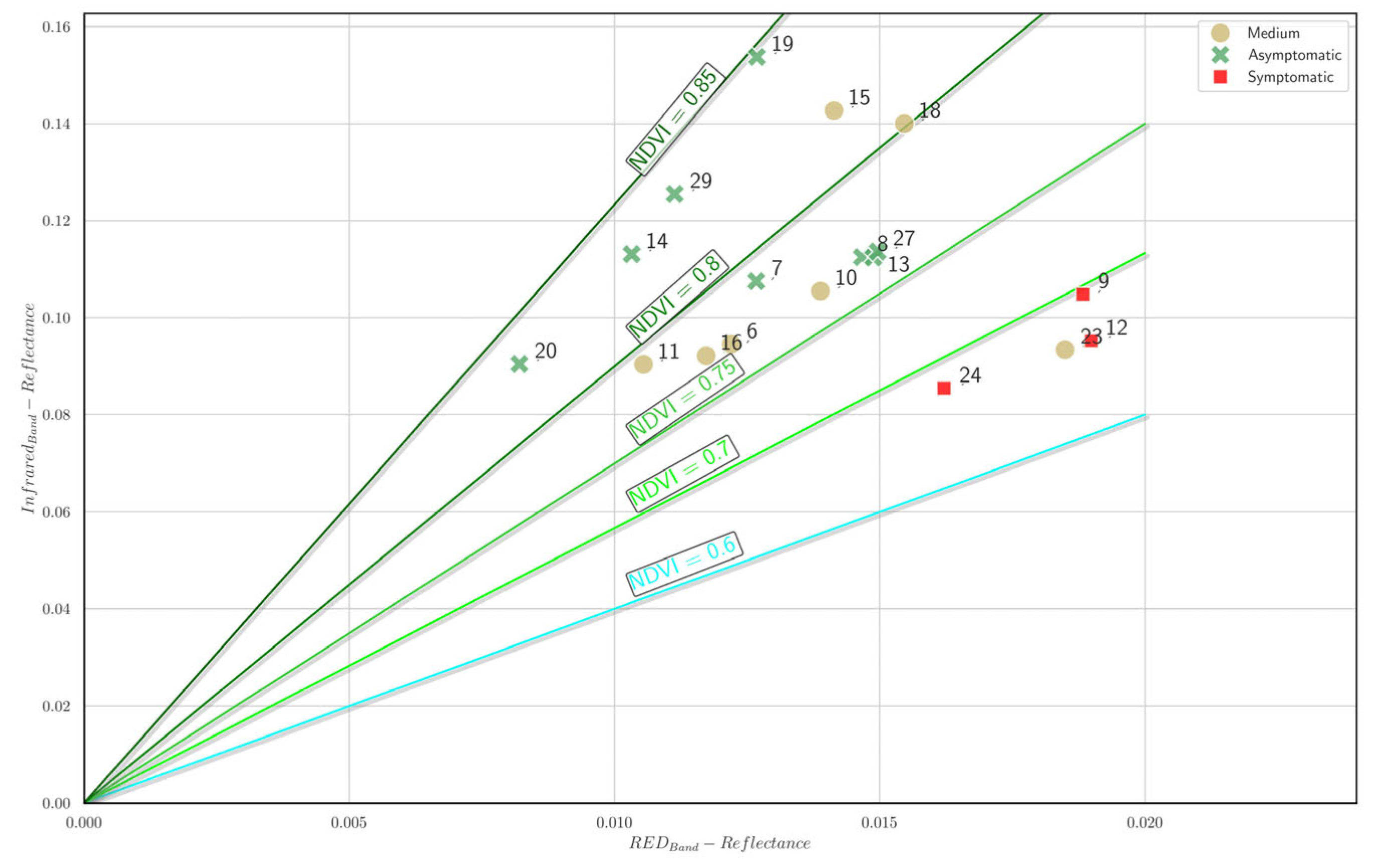
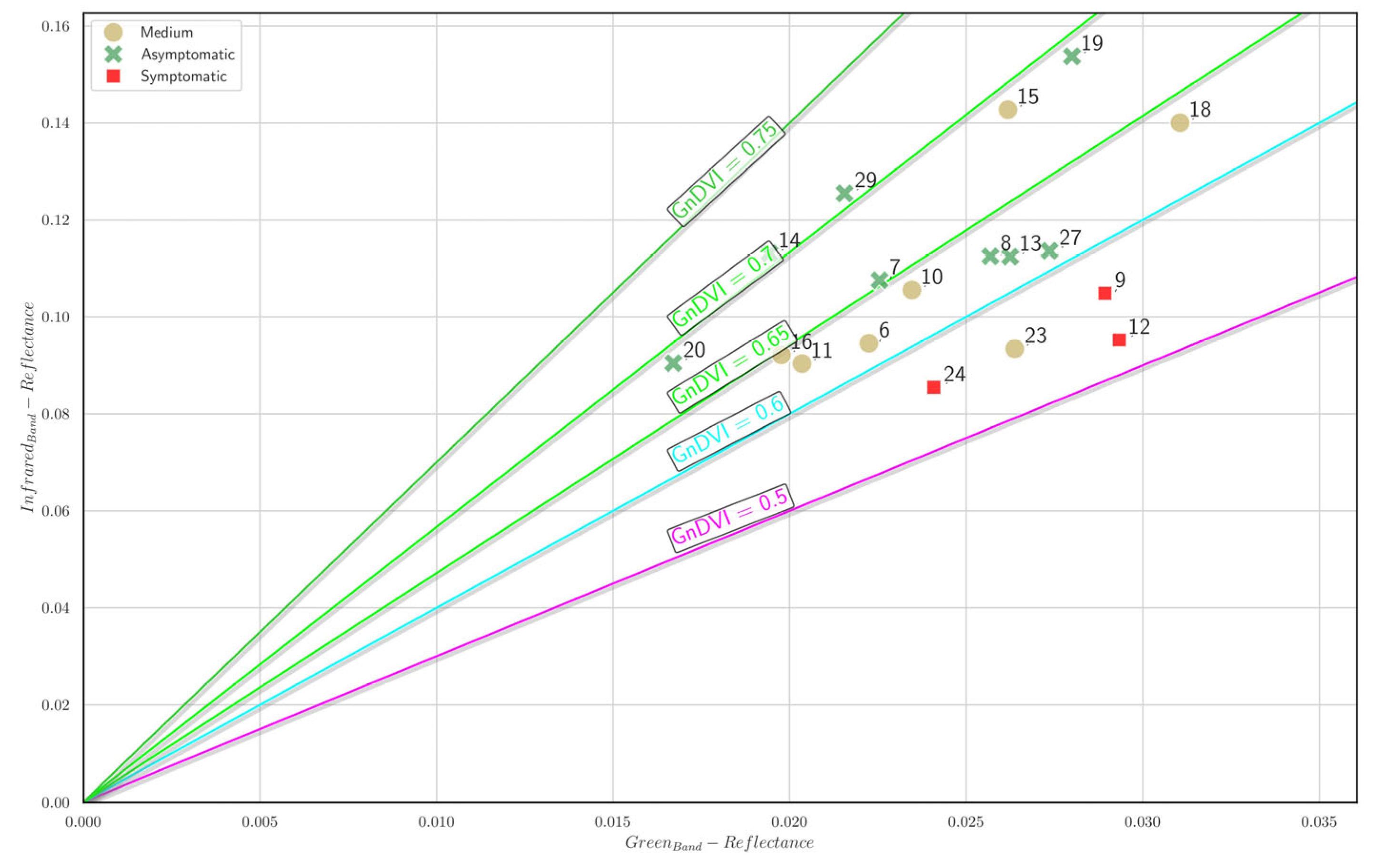
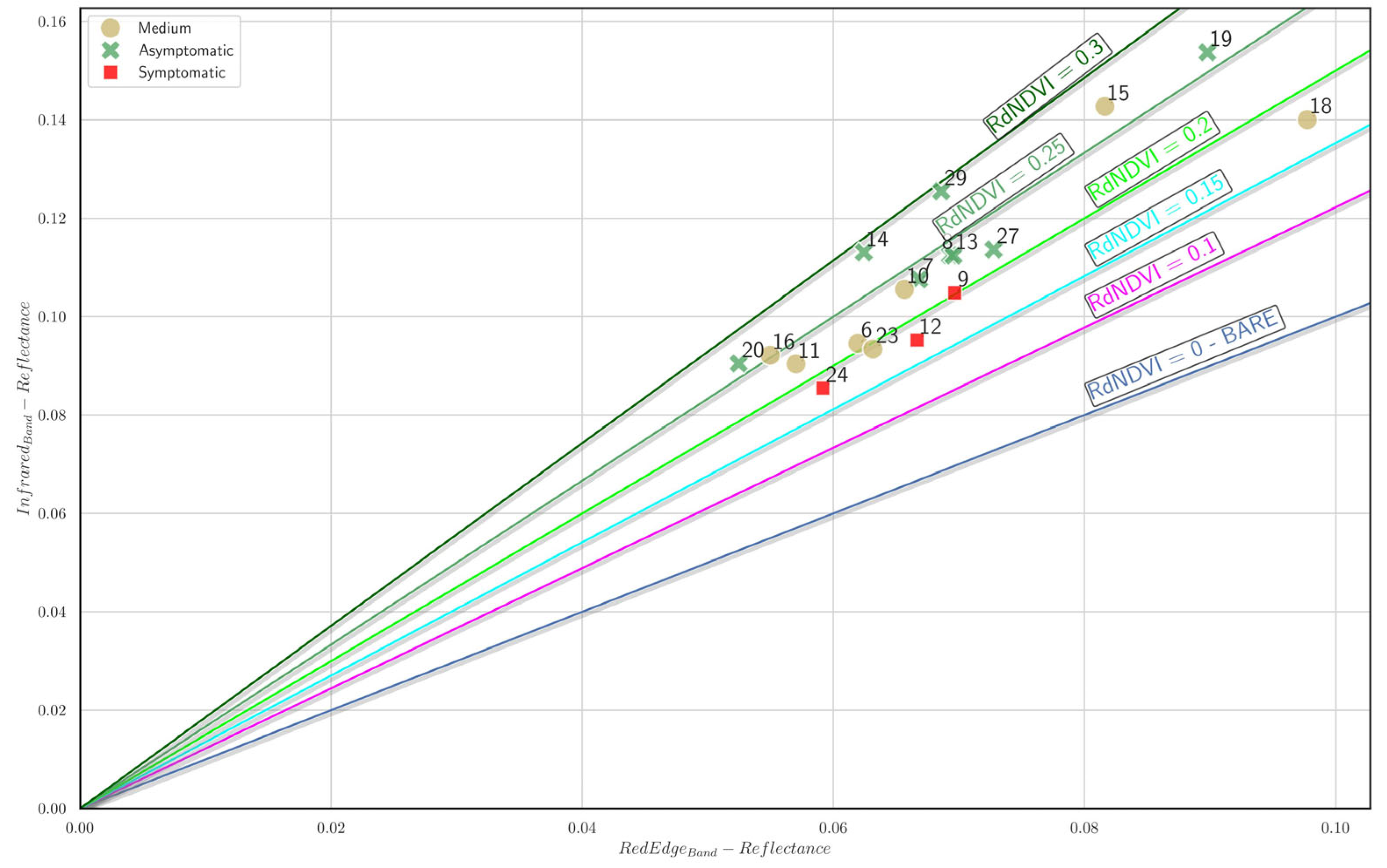
| Tree ID | Height (m) | Dim. Crown NS (m) | Dim. Crown EW (m) | Average (m) | L (m2) | Elevation (m a.s.l.) | Position Related to Neighboring Trees | Damage Index (I) | Health Status |
|---|---|---|---|---|---|---|---|---|---|
| 1 | 6.5 | 6.4 | 7.6 | 7 | 81.2 | 1651 | Isolated and exposed to strong winds | 0.74 | Symptomatic |
| 2 | 14.4 | 9.2 | 9.1 | 9.15 | 217.2 | 1526 | Isolated | 0.06 | Asymptomatic |
| 4 | 0.85 | 2.1 | 1.5 | 1.8 | 3.5 | 1639 | Under a bigger A. nebrodensis tree | 0.19 | Medium |
| 6 | 7.8 | 7.2 | 6.3 | 6.75 | 90.1 | 1639 | Isolated | 0.26 | Medium |
| 7 | 5.7 | 5.3 | 5.5 | 5.4 | 53.5 | 1603 | Near an oak tree | 0.09 | Asymptomatic |
| 8 | 11.0 | 7.7 | 6.9 | 7.3 | 132.9 | 1577 | Near broadleaves | 0.04 | Asymptomatic |
| 9 | 1.8 | 3.6 | 3.6 | 3.6 | 14.4 | 1617 | Isolated on rocks exposed to strong winds | 2.43 | Symptomatic |
| 10 | 7.5 | 7.5 | 7.3 | 7.4 | 97.2 | 1525 | Isolated on a ridge | 0.11 | Medium |
| 11 | 8.2 | 5.1 | 4.6 | 4.85 | 65.1 | 1520 | Isolated on a ridge | 0.20 | Medium |
| 12 | 8.5 | 6.8 | 8.4 | 7.6 | 111.2 | 1604 | Isolated on a scree exposed to strong winds | 1.28 | Symptomatic |
| 13 | 11.1 | 9.5 | 9.2 | 9.35 | 176.9 | 1567 | Isolated | 0.05 | Asymptomatic |
| 14 | 7.2 | 6.5 | 6.8 | 6.65 | 82.1 | 1556 | Near oak trees | 0.06 | Asymptomatic |
| 15 | 8.5 | 5.7 | 5.2 | 5.45 | 76.4 | 1539 | Near oak trees | 0.17 | Medium |
| 16 | 5.3 | 7.7 | 4.8 | 6.25 | 59.8 | 1488 | Isolated on superficial soil | 0.18 | Medium |
| 17 | 10.7 | 8.7 | 7.3 | 8 | 143.5 | 1488 | Isolated | 0.04 | Asymptomatic |
| 18 | 7.6 | 5.2 | 4.5 | 4.85 | 60.1 | 1503 | Near beech trees | 0.13 | Medium |
| 19 | 5.5 | 4.6 | 4.9 | 4.75 | 44.7 | 1487 | Margin of a beech grove | 0.05 | Asymptomatic |
| 20 | 9.2 | 2.9 | 3.2 | 3.05 | 44.7 | 1480 | Within a beech grove | 0 | Asymptomatic |
| 21 | 11.6 | 8.5 | 7.7 | 8.1 | 156.3 | 1433 | Within oak grove | 0.03 | Asymptomatic |
| 22 | 12.0 | 5.9 | 5.9 | 56 | 1400 | Within a beech grove | 0 | Asymptomatic | |
| 23 | 7.5 | 4.6 | 4.3 | 4.45 | 54.7 | 1673 | Isolated on a ridge exposed to strong winds | 0.33 | Medium |
| 24 | 3.1 | 3.8 | 4.1 | 3.95 | 22.8 | 1705 | Isolated on a ridge exposed to strong winds | 0.53 | Symptomatic |
| 25 | 3.3 | 3.5 | 1.6 | 2.55 | 14.2 | 1705 | Isolated on a ridge exposed to strong winds | 0.71 | Symptomatic |
| 26 | 6.0 | 3.8 | 3.6 | 3.7 | 36.5 | 1599 | Within a beech grove | 0.08 | Asymptomatic |
| 27 | 10.0 | 7.4 | 6.7 | 7.05 | 117.4 | 1597 | Isolated | 0 | Asymptomatic |
| 28 | 0.48 | 1.3 | 1.1 | 1.2 | 1.4 | 1586 | Small, damaged by wild herbivores | 2.96 | Symptomatic |
| 29 | 10.5 | 4.2 | 4.9 | 4.55 | 76.8 | 1468 | Within a beech grove | 0 | Asymptomatic |
| 30 | 1.76 | 1.7 | 1.6 | 1.65 | 5.2 | 1400 | Under oaks | 0 | Asymptomatic |
| 31 | 1.25 | 1.4 | 1.3 | 1.35 | 2.9 | 1604 | Small, damaged by wild herbivores | 1.39 | Symptomatic |
| 32 | 1.96 | 1.7 | 1.8 | 1.75 | 5.7 | 1449 | Within a beech grove | 0 | Asymptomatic |
| Index | Brief Explanation | Formula | Range | Reference |
|---|---|---|---|---|
| NDVI | Normalized Difference Vegetation Index. Most commonly used to estimate vegetation health and biomass. | −1 to +1 | [30] | |
| Green NDVI | Uses green reflectance instead of red, often more sensitive to chlorophyll content. | −1 to +1 | [31] | |
| Red-edge NDVI | Similar to NDVI but uses the red-edge band instead of the Red band, improving sensitivity to changes in canopy structure. | −1 to +1 | [31] | |
| ExGreen | Excess Green index. A color-based index (RGB) used in vegetation detection from standard cameras. | −∞ to +∞ | [32] |
| NDVI | ||||||||||||
|---|---|---|---|---|---|---|---|---|---|---|---|---|
| Tree ID | n. Pixels | Mean | Sem | Median | Min | Max | Std | q0.25 | q0.75 | CI Low | CI High | |
| Asymptomatic | 7 | 28,900 | 0.79 | 0.0008 | 0.83 | 0.12 | 0.91 | 0.13 | 0.80 | 0.85 | 0.79 | 0.79 |
| 8 | 52,637 | 0.78 | 0.0007 | 0.83 | 0.04 | 0.88 | 0.16 | 0.81 | 0.85 | 0.78 | 0.78 | |
| 13 | 80,197 | 0.75 | 0.0007 | 0.82 | −0.02 | 0.88 | 0.19 | 0.79 | 0.84 | 0.75 | 0.75 | |
| 14 | 36,720 | 0.83 | 0.0003 | 0.84 | 0.35 | 0.91 | 0.05 | 0.83 | 0.86 | 0.83 | 0.83 | |
| 19 | 12,725 | 0.85 | 0.0003 | 0.85 | 0.49 | 0.90 | 0.03 | 0.84 | 0.86 | 0.85 | 0.85 | |
| 20 | 5874 | 0.84 | 0.0004 | 0.84 | 0.66 | 0.93 | 0.03 | 0.82 | 0.85 | 0.84 | 0.84 | |
| 27 | 37,903 | 0.77 | 0.0007 | 0.81 | 0.03 | 0.89 | 0.13 | 0.78 | 0.82 | 0.77 | 0.77 | |
| 29 | 7500 | 0.84 | 0.0002 | 0.84 | 0.72 | 0.89 | 0.02 | 0.83 | 0.85 | 0.84 | 0.84 | |
| Statistics of Health Status group | 262,456 | 0.78 | 0.0003 | 0.83 | −0.02 | 0.93 | 0.15 | 0.80 | 0.85 | 0.78 | 0.79 | |
| Medium | 6 | 34,690 | 0.77 | 0.0006 | 0.80 | 0.03 | 0.88 | 0.11 | 0.78 | 0.82 | 0.77 | 0.77 |
| 10 | 49,074 | 0.77 | 0.0004 | 0.80 | 0.21 | 0.85 | 0.09 | 0.77 | 0.82 | 0.77 | 0.77 | |
| 11 | 58,464 | 0.79 | 0.0002 | 0.80 | 0.56 | 0.90 | 0.04 | 0.78 | 0.82 | 0.79 | 0.79 | |
| 15 | 13,568 | 0.82 | 0.0007 | 0.84 | 0.34 | 0.88 | 0.08 | 0.82 | 0.85 | 0.82 | 0.82 | |
| 16 | 87,584 | 0.78 | 0.0005 | 0.82 | −0.01 | 0.92 | 0.14 | 0.79 | 0.84 | 0.78 | 0.78 | |
| 18 | 62,813 | 0.80 | 0.0003 | 0.81 | 0.32 | 0.93 | 0.07 | 0.79 | 0.84 | 0.80 | 0.80 | |
| 23 | 15,276 | 0.68 | 0.0015 | 0.75 | 0.03 | 0.90 | 0.18 | 0.61 | 0.81 | 0.68 | 0.68 | |
| Statistics of Health Status group | 321469 | 0.78 | 0.0002 | 0.81 | −0.01 | 0.93 | 0.11 | 0.78 | 0.83 | 0.78 | 0.78 | |
| Symptomatic | 9 | 19,685 | 0.68 | 0.0018 | 0.80 | 0.00 | 0.89 | 0.25 | 0.68 | 0.84 | 0.68 | 0.69 |
| 12 | 64,106 | 0.66 | 0.0011 | 0.79 | −0.12 | 0.89 | 0.27 | 0.69 | 0.82 | 0.66 | 0.66 | |
| 24 | 24,180 | 0.68 | 0.0013 | 0.76 | −0.01 | 0.90 | 0.20 | 0.62 | 0.82 | 0.68 | 0.68 | |
| Statistics of Health Status group | 107,971 | 0.67 | 0.0008 | 0.78 | −0.12 | 0.90 | 0.26 | 0.66 | 0.82 | 0.67 | 0.67 | |
| Green NDVI | ||||||||||||
|---|---|---|---|---|---|---|---|---|---|---|---|---|
| Tree ID | n. Pixels | Mean | Sem | Median | Min | Max | Std | q0.25 | q0.75 | CI Low | CI High | |
| Asymptomatic | 7 | 28,900 | 0.66 | 0.0006 | 0.68 | 0.09 | 0.83 | 0.11 | 0.65 | 0.71 | 0.66 | 0.66 |
| 8 | 52,637 | 0.63 | 0.0006 | 0.67 | 0.03 | 0.76 | 0.13 | 0.65 | 0.69 | 0.63 | 0.64 | |
| 13 | 80,197 | 0.61 | 0.0006 | 0.66 | −0.09 | 0.77 | 0.16 | 0.63 | 0.68 | 0.61 | 0.61 | |
| 14 | 36,720 | 0.71 | 0.0002 | 0.72 | 0.32 | 0.84 | 0.05 | 0.69 | 0.74 | 0.71 | 0.71 | |
| 19 | 12,725 | 0.69 | 0.0003 | 0.69 | 0.47 | 0.78 | 0.03 | 0.67 | 0.71 | 0.69 | 0.69 | |
| 20 | 5874 | 0.70 | 0.0006 | 0.69 | 0.54 | 0.86 | 0.04 | 0.67 | 0.72 | 0.70 | 0.70 | |
| 27 | 37,903 | 0.61 | 0.0005 | 0.64 | −0.03 | 0.74 | 0.10 | 0.62 | 0.66 | 0.61 | 0.61 | |
| 29 | 7500 | 0.71 | 0.0003 | 0.71 | 0.58 | 0.78 | 0.02 | 0.69 | 0.72 | 0.71 | 0.71 | |
| Statistics of Health Status group | 262,456 | 0.64 | 0.0002 | 0.67 | −0.09 | 0.86 | 0.13 | 0.64 | 0.70 | 0.64 | 0.64 | |
| Medium | 6 | 34,690 | 0.62 | 0.0004 | 0.64 | −0.05 | 0.81 | 0.08 | 0.62 | 0.65 | 0.62 | 0.62 |
| 10 | 49,074 | 0.64 | 0.0003 | 0.66 | 0.20 | 0.73 | 0.07 | 0.62 | 0.68 | 0.64 | 0.64 | |
| 11 | 58,464 | 0.64 | 0.0002 | 0.63 | 0.45 | 0.80 | 0.05 | 0.61 | 0.66 | 0.64 | 0.64 | |
| 15 | 13,568 | 0.69 | 0.0005 | 0.71 | 0.33 | 0.76 | 0.06 | 0.68 | 0.72 | 0.69 | 0.69 | |
| 16 | 87,584 | 0.65 | 0.0004 | 0.68 | −0.04 | 0.83 | 0.12 | 0.65 | 0.70 | 0.65 | 0.65 | |
| 18 | 62,813 | 0.64 | 0.0002 | 0.64 | 0.30 | 0.84 | 0.06 | 0.61 | 0.67 | 0.64 | 0.64 | |
| 23 | 15,276 | 0.56 | 0.0012 | 0.62 | −0.03 | 0.82 | 0.15 | 0.51 | 0.66 | 0.56 | 0.57 | |
| Statistics of Health Status group | 321,469 | 0.64 | 0.0002 | 0.65 | −0.05 | 0.84 | 0.09 | 0.62 | 0.69 | 0.64 | 0.64 | |
| Symptomatic | 9 | 19,685 | 0.55 | 0.0015 | 0.65 | −0.07 | 0.80 | 0.22 | 0.54 | 0.69 | 0.55 | 0.56 |
| 12 | 64,106 | 0.52 | 0.0010 | 0.62 | −0.15 | 0.79 | 0.24 | 0.55 | 0.66 | 0.52 | 0.52 | |
| 24 | 24,180 | 0.56 | 0.0010 | 0.61 | −0.11 | 0.80 | 0.16 | 0.51 | 0.66 | 0.55 | 0.56 | |
| Statistics of Health Status group | 107,971 | 0.53 | 0.0007 | 0.62 | −0.15 | 0.80 | 0.22 | 0.53 | 0.67 | 0.53 | 0.53 | |
| ExGreen | ||||||||||||
|---|---|---|---|---|---|---|---|---|---|---|---|---|
| Tree ID | n. Pixels | Mean | Sem | Median | Min | Max | Std | q0.25 | q0.75 | CI Low | CI High | |
| Asymptomatic | 7 | 28,900 | 0.01 | 0.00006 | 0.02 | −0.03 | 0.03 | 0.010 | 0.01 | 0.02 | 0.01 | 0.01 |
| 8 | 52,637 | 0.02 | 0.00005 | 0.02 | −0.04 | 0.03 | 0.012 | 0.01 | 0.02 | 0.02 | 0.02 | |
| 13 | 80,197 | 0.02 | 0.00003 | 0.02 | −0.03 | 0.03 | 0.009 | 0.01 | 0.02 | 0.02 | 0.02 | |
| 14 | 36,720 | 0.01 | 0.00003 | 0.02 | −0.03 | 0.04 | 0.006 | 0.01 | 0.02 | 0.01 | 0.01 | |
| 19 | 12,725 | 0.03 | 0.00004 | 0.03 | −0.01 | 0.04 | 0.005 | 0.02 | 0.03 | 0.03 | 0.03 | |
| 20 | 5874 | 0.01 | 0.00009 | 0.01 | 0.00 | 0.03 | 0.007 | 0.01 | 0.02 | 0.01 | 0.01 | |
| 27 | 37,903 | 0.02 | 0.00004 | 0.02 | −0.03 | 0.05 | 0.008 | 0.02 | 0.02 | 0.02 | 0.02 | |
| 29 | 7500 | 0.02 | 0.00004 | 0.02 | 0.00 | 0.03 | 0.004 | 0.01 | 0.02 | 0.02 | 0.02 | |
| Statistics of Health Status group | 262,456 | 0.02 | 0.00002 | 0.02 | −0.04 | 0.05 | 0.009 | 0.01 | 0.02 | 0.02 | 0.02 | |
| Medium | 6 | 34,690 | 0.02 | 0.00004 | 0.02 | −0.04 | 0.03 | 0.008 | 0.01 | 0.02 | 0.02 | 0.02 |
| 10 | 49,074 | 0.01 | 0.00003 | 0.02 | −0.02 | 0.03 | 0.006 | 0.01 | 0.02 | 0.01 | 0.01 | |
| 11 | 58,464 | 0.02 | 0.00003 | 0.02 | 0.00 | 0.03 | 0.007 | 0.01 | 0.02 | 0.02 | 0.02 | |
| 15 | 13,568 | 0.02 | 0.00006 | 0.02 | −0.02 | 0.04 | 0.007 | 0.02 | 0.02 | 0.02 | 0.02 | |
| 16 | 87,584 | 0.01 | 0.00003 | 0.01 | −0.07 | 0.03 | 0.010 | 0.01 | 0.02 | 0.01 | 0.01 | |
| 18 | 62,813 | 0.03 | 0.00004 | 0.03 | −0.03 | 0.06 | 0.011 | 0.02 | 0.03 | 0.02 | 0.03 | |
| 23 | 15,276 | 0.01 | 0.00008 | 0.01 | −0.04 | 0.03 | 0.010 | 0.00 | 0.02 | 0.01 | 0.01 | |
| Statistics of Health Status group | 321,469 | 0.02 | 0.00002 | 0.02 | −0.07 | 0.06 | 0.010 | 0.01 | 0.02 | 0.02 | 0.02 | |
| Symptomatic | 9 | 19,685 | 0.01 | 0.00009 | 0.02 | −0.04 | 0.03 | 0.012 | 0.01 | 0.02 | 0.01 | 0.01 |
| 12 | 64,106 | 0.01 | 0.00004 | 0.02 | −0.03 | 0.04 | 0.011 | 0.00 | 0.02 | 0.01 | 0.01 | |
| 24 | 24,180 | 0.01 | 0.00008 | 0.01 | −0.05 | 0.05 | 0.013 | 0.00 | 0.02 | 0.01 | 0.01 | |
| Statistics of Health Status group | 107,971 | 0.01 | 0.00004 | 0.02 | −0.05 | 0.05 | 0.012 | 0.00 | 0.02 | 0.01 | 0.01 | |
| Red-Edge NDVI | ||||||||||||
|---|---|---|---|---|---|---|---|---|---|---|---|---|
| Tree ID | n. Pixels | Mean | Sem | Median | Min | Max | Std | q0.25 | q0.75 | CI Low | CI High | |
| Asymptomatic | 7 | 28,900 | 0.25 | 0.0005 | 0.24 | 0.00 | 0.50 | 0.08 | 0.22 | 0.27 | 0.25 | 0.25 |
| 8 | 52,637 | 0.25 | 0.0003 | 0.26 | −0.04 | 0.45 | 0.07 | 0.24 | 0.27 | 0.25 | 0.25 | |
| 13 | 80,197 | 0.23 | 0.0002 | 0.25 | −0.08 | 0.40 | 0.07 | 0.23 | 0.26 | 0.23 | 0.23 | |
| 14 | 36,720 | 0.30 | 0.0003 | 0.30 | 0.09 | 0.50 | 0.05 | 0.27 | 0.32 | 0.30 | 0.30 | |
| 19 | 12,725 | 0.26 | 0.0003 | 0.26 | 0.14 | 0.39 | 0.03 | 0.24 | 0.28 | 0.26 | 0.26 | |
| 20 | 5874 | 0.28 | 0.0008 | 0.27 | 0.11 | 0.55 | 0.06 | 0.24 | 0.31 | 0.28 | 0.28 | |
| 27 | 37,903 | 0.22 | 0.0002 | 0.23 | −0.04 | 0.33 | 0.05 | 0.21 | 0.25 | 0.22 | 0.22 | |
| 29 | 7500 | 0.29 | 0.0003 | 0.29 | 0.22 | 0.39 | 0.02 | 0.28 | 0.31 | 0.29 | 0.29 | |
| Statistics of Health Status group | 262,456 | 0.25 | 0.0001 | 0.25 | −0.08 | 0.55 | 0.07 | 0.23 | 0.28 | 0.25 | 0.25 | |
| Medium | 6 | 34,690 | 0.21 | 0.0002 | 0.22 | −0.08 | 0.41 | 0.04 | 0.20 | 0.23 | 0.21 | 0.21 |
| 10 | 49,074 | 0.23 | 0.0002 | 0.24 | 0.03 | 0.33 | 0.04 | 0.22 | 0.26 | 0.23 | 0.23 | |
| 11 | 58,464 | 0.24 | 0.0002 | 0.23 | 0.14 | 0.41 | 0.04 | 0.21 | 0.26 | 0.24 | 0.24 | |
| 15 | 13,568 | 0.27 | 0.0003 | 0.28 | 0.12 | 0.35 | 0.03 | 0.26 | 0.29 | 0.27 | 0.27 | |
| 16 | 87,584 | 0.27 | 0.0002 | 0.27 | −0.19 | 0.61 | 0.07 | 0.25 | 0.30 | 0.27 | 0.27 | |
| 18 | 62,813 | 0.18 | 0.0003 | 0.18 | −0.15 | 0.49 | 0.07 | 0.14 | 0.22 | 0.18 | 0.18 | |
| 23 | 15,276 | 0.19 | 0.0006 | 0.21 | −0.07 | 0.50 | 0.07 | 0.15 | 0.24 | 0.19 | 0.20 | |
| Statistics of Health Status group | 321,469 | 0.23 | 0.0001 | 0.23 | −0.19 | 0.61 | 0.07 | 0.20 | 0.27 | 0.23 | 0.23 | |
| Symptomatic | 9 | 19,685 | 0.19 | 0.0006 | 0.22 | −0.07 | 0.40 | 0.09 | 0.17 | 0.25 | 0.19 | 0.19 |
| 12 | 64,106 | 0.18 | 0.0004 | 0.20 | −0.12 | 0.46 | 0.10 | 0.15 | 0.24 | 0.18 | 0.18 | |
| 24 | 24,180 | 0.19 | 0.0005 | 0.20 | −0.09 | 0.41 | 0.08 | 0.15 | 0.24 | 0.19 | 0.19 | |
| Statistics of Health Status group | 107,971 | 0.18 | 0.0003 | 0.20 | −0.12 | 0.46 | 0.09 | 0.16 | 0.24 | 0.18 | 0.18 | |
Disclaimer/Publisher’s Note: The statements, opinions and data contained in all publications are solely those of the individual author(s) and contributor(s) and not of MDPI and/or the editor(s). MDPI and/or the editor(s) disclaim responsibility for any injury to people or property resulting from any ideas, methods, instructions or products referred to in the content. |
© 2025 by the authors. Licensee MDPI, Basel, Switzerland. This article is an open access article distributed under the terms and conditions of the Creative Commons Attribution (CC BY) license (https://creativecommons.org/licenses/by/4.0/).
Share and Cite
Arcidiaco, L.; Corongiu, M.; Della Rocca, G.; Barberini, S.; Emiliani, G.; Schicchi, R.; Bonomo, P.; Pellegrini, D.; Danti, R. Health Monitoring of Abies nebrodensis Combining UAV Remote Sensing Data, Climatological and Weather Observations, and Phytosanitary Inspections. Forests 2025, 16, 1200. https://doi.org/10.3390/f16071200
Arcidiaco L, Corongiu M, Della Rocca G, Barberini S, Emiliani G, Schicchi R, Bonomo P, Pellegrini D, Danti R. Health Monitoring of Abies nebrodensis Combining UAV Remote Sensing Data, Climatological and Weather Observations, and Phytosanitary Inspections. Forests. 2025; 16(7):1200. https://doi.org/10.3390/f16071200
Chicago/Turabian StyleArcidiaco, Lorenzo, Manuela Corongiu, Gianni Della Rocca, Sara Barberini, Giovanni Emiliani, Rosario Schicchi, Peppuccio Bonomo, David Pellegrini, and Roberto Danti. 2025. "Health Monitoring of Abies nebrodensis Combining UAV Remote Sensing Data, Climatological and Weather Observations, and Phytosanitary Inspections" Forests 16, no. 7: 1200. https://doi.org/10.3390/f16071200
APA StyleArcidiaco, L., Corongiu, M., Della Rocca, G., Barberini, S., Emiliani, G., Schicchi, R., Bonomo, P., Pellegrini, D., & Danti, R. (2025). Health Monitoring of Abies nebrodensis Combining UAV Remote Sensing Data, Climatological and Weather Observations, and Phytosanitary Inspections. Forests, 16(7), 1200. https://doi.org/10.3390/f16071200











